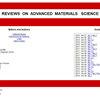玄武岩纤维长度对天然水工石灰砂浆性能的影响
IF 3.6
4区 材料科学
Q2 MATERIALS SCIENCE, MULTIDISCIPLINARY
引用次数: 0
摘要
针对用于修复历史建筑的强化石灰基灰泥的特性进行的研究数量仍然很少。与此形成鲜明对比的是,业界对这些产品作为水泥砂浆替代品的兴趣与日俱增,因为它们既有施工优势(兼容性要求),又有较低的成本(经济和环境)。因此,本研究调查了玄武岩纤维长度对增强型天然水硬性石灰砂浆的物理、机械和耐久性能的影响,并提供了选择光学混合物的标准,以满足将其用作传统和现代建筑材料的各种性能要求。我们对玄武岩纤维含量为 1%、长度为 6、12、18 和 24 毫米的试样进行了测试。新鲜砂浆的测试结果表明,纤维长度增加会降低稠度和体积密度,并增加空气含量。关于硬化砂浆的耐久性能,纤维长度与加固砂浆吸水系数的降低之间没有直接关系。纤维长度与增强砂浆肖氏硬度的增加和粘合强度的降低之间也没有明显的关系。相反,对于小长度纤维(不超过 12 毫米),纤维长度与其他基本机械性能(如抗弯强度和抗压强度)的增加有直接关系。根据所获得的结果,提出了一个预测模型,以确定抗折和抗压强度的放大系数与纤维长度的函数关系。本文章由计算机程序翻译,如有差异,请以英文原文为准。
Effect of basalt fiber length on the behavior of natural hydraulic lime-based mortars
The number of studies aimed at the characterization of reinforced lime-based mortars for use in the rehabilitation of historic buildings is still very small. This fact contrasts with the growing interest of the industry in these products as substitutes for cement mortars, both for their constructive advantages (compatibility requirements) and their lower cost (economic and environmental). For this reason, this study investigates the effect of basalt fiber length on the physical, mechanical, and durability properties of reinforced natural hydraulic lime mortars and provides criteria for selecting optical blends to meet the various performance requirements for their use as building materials for traditional and contemporary structures. Specimens with 1% volume of basalt fibers and lengths of 6, 12, 18, and 24 mm have been tested. The results in fresh mortar show that increasing the fiber length decreases the consistency and bulk density, as well as increases the air content. Regarding the durability properties of hardened mortar, no direct relationship is observed between fiber length and the decrease in the water absorption coefficient of reinforced mortars. Nor is there a clear relationship between fiber length and the increase in Shore hardness and the decrease in adhesive strength in the reinforced mortars. On the contrary, for small lengths (up to 12 mm), there is a direct relationship between fiber length and the increase in other fundamental mechanical properties such as flexural and compressive strength. Based on the results obtained, a predictive model is proposed to determine the amplification factor of flexural and compressive strength as a function of fiber length.
求助全文
通过发布文献求助,成功后即可免费获取论文全文。
去求助
来源期刊

Reviews on Advanced Materials Science
工程技术-材料科学:综合
CiteScore
5.10
自引率
11.10%
发文量
43
审稿时长
3.5 months
期刊介绍:
Reviews on Advanced Materials Science is a fully peer-reviewed, open access, electronic journal that publishes significant, original and relevant works in the area of theoretical and experimental studies of advanced materials. The journal provides the readers with free, instant, and permanent access to all content worldwide; and the authors with extensive promotion of published articles, long-time preservation, language-correction services, no space constraints and immediate publication.
Reviews on Advanced Materials Science is listed inter alia by Clarivate Analytics (formerly Thomson Reuters) - Current Contents/Physical, Chemical, and Earth Sciences (CC/PC&ES), JCR and SCIE. Our standard policy requires each paper to be reviewed by at least two Referees and the peer-review process is single-blind.
 求助内容:
求助内容: 应助结果提醒方式:
应助结果提醒方式:


